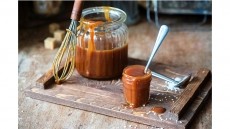Costs for liquorice extracts continue to rise on global shortages
for liquorice extracts as demand on global stocks impacts the
supply line.
Driven by shortages of licorice roots in all producing countries, particularly Iran and China, in the past 12 months prices have soared by more than a third for this natural sweetener and flavour used in a wide variety of sweets and beverages.
While prices vary according to the block, paste or spray dried form for this popular extract derived from licorice roots, lots of between 10 and 20 tonnes are demanding €4.75 to €4.80 a kilo, compared with about €3.25 a year ago.
And the trend is unlikely to taper off, with industry players anticipating prices are heading towards the €5 per kilo barrier.
" While the €5 mark has not yet been hit, maybe this will happen in the second half of 2008, " Jens Milt, division manager, liquorice extracts at Alfred L Wolff tells ConfectioneryNews.com.
Locking in supplies - essential as shortages prevail - is familiar territory for major licorice supplier Alfred L Woolf that for decades has been working in oft challenging geographical zones to harness raw materials for its ingredients', notably gum, portfolio.
Forward contracts, trustworthy partners and vigilence regarding quality help the German firm secure raw material supplies, adds Jens Milt, clarifying that the firm also has 'sufficient buffer stocks' for the liquorice extract in Hamburg, Germany.
Looking to stocks in the medium term, Milt affirmed that supplies for liquorice roots would be sufficient.
In the short term, confronted by double-digit rises for the raw liquorice root material, Alfred L Wolff has passed the costs on to the market: "Our margins are not that high that we can absorb it," explains Milt.
Extracting extract from the roots - four kilos of roots provides one kilo of extract - draws substantially on energy as hot water and steam are used to make the extract from the chopped-up and ground roots, and then energy once again is required to remove the water from the extract.
With oil crude futures standing slightly above $134 a barrel on Monday, fuel costs are also a key factor in the price equation.
Figures are further influenced by transport dilemmas - an ongoing problem in the liquorice growing regions.
In zones where the infrastucture needs investment, getting the products across the land-locked zones and to a sea port has also contributed to price rises.
Concentrated and purified extract of the liquorice roots Glycyrrhiza glabra is used in confectionery formulations, as a sweetener, flavouring agent and enhancer, and debittering agent .
The source of which comes from its active substance - glycyrrhizin - a very sweet glycoside occurring in the roots as the calcium plus potassium salts of glycyrrhizin acid.
Used by manufacturers in confectionery products - notably Trebor Bassett's (Cadbury's) Liquorice Allsorts brand and by French sweet leader Haribo - liquorice is a wild-growing plant native to southern Europe and parts of Asia, and is harvested in the autumn two to three years after planting.
Liquorice is also commonly used by the pharmaceutical industry as a sweetening/flavouring agent to counteract the unpleasant taste of many drugs or added as a filler in capsules.
Containing a myriad of biologically active ingredients the root is also an expectorant and therefore used extensively in cough syrups.
Key ingredients in the root include triterpenes of the oleanane type, flavonoids and isoflavonoids - plant antioxidants/plant estrogens; polysaccharides, mainly glucans; and starch, sugars, and amino acids.


















